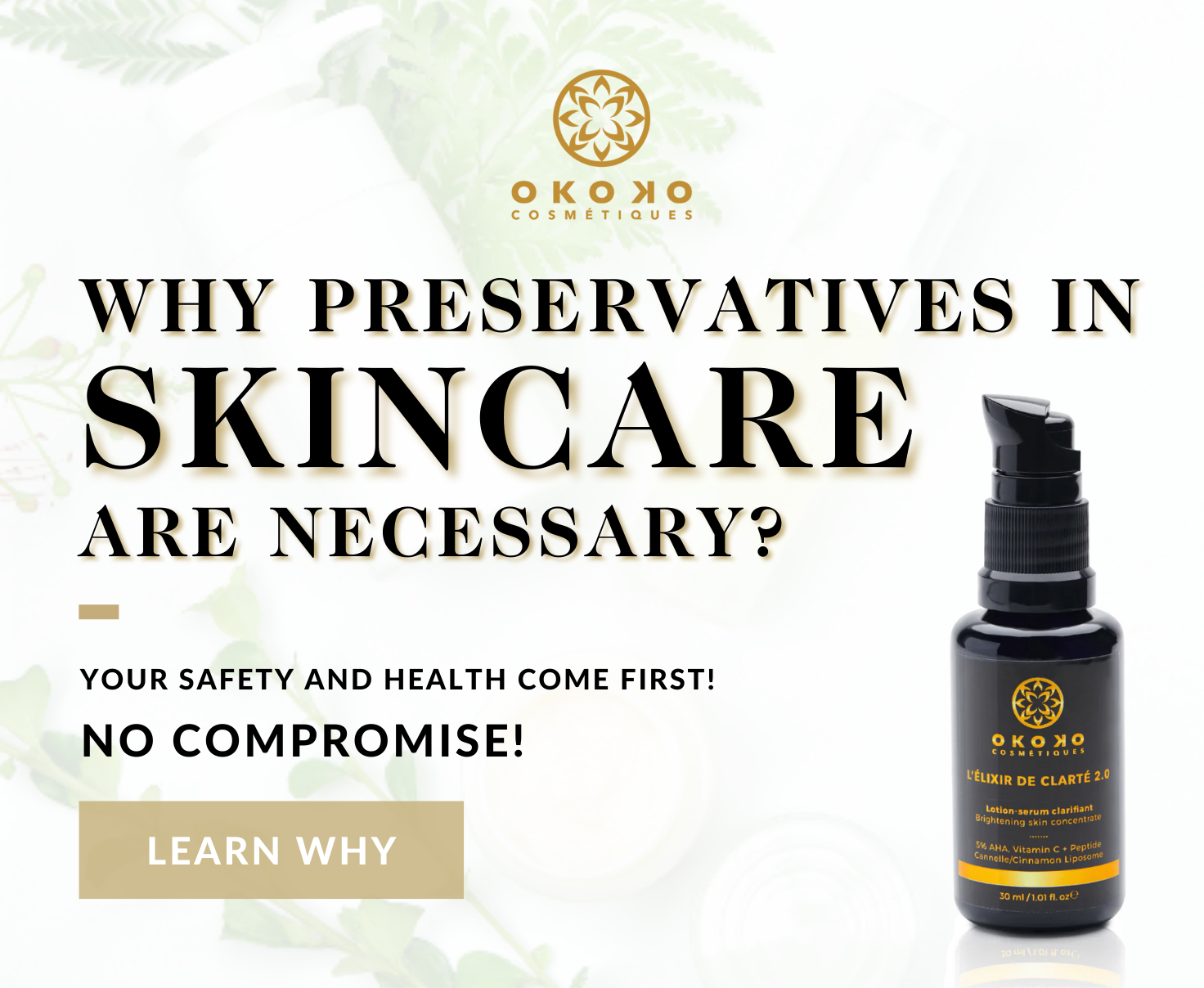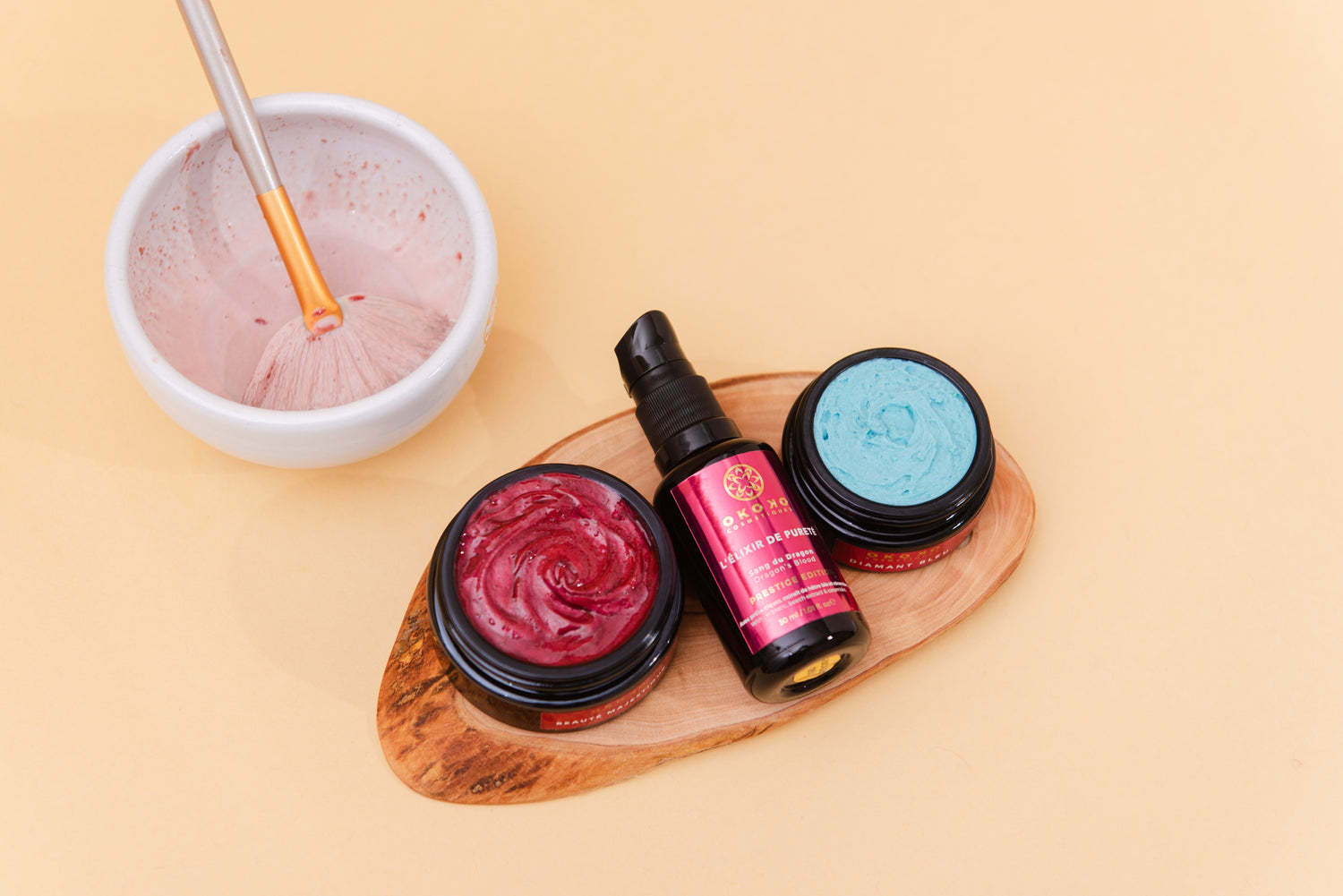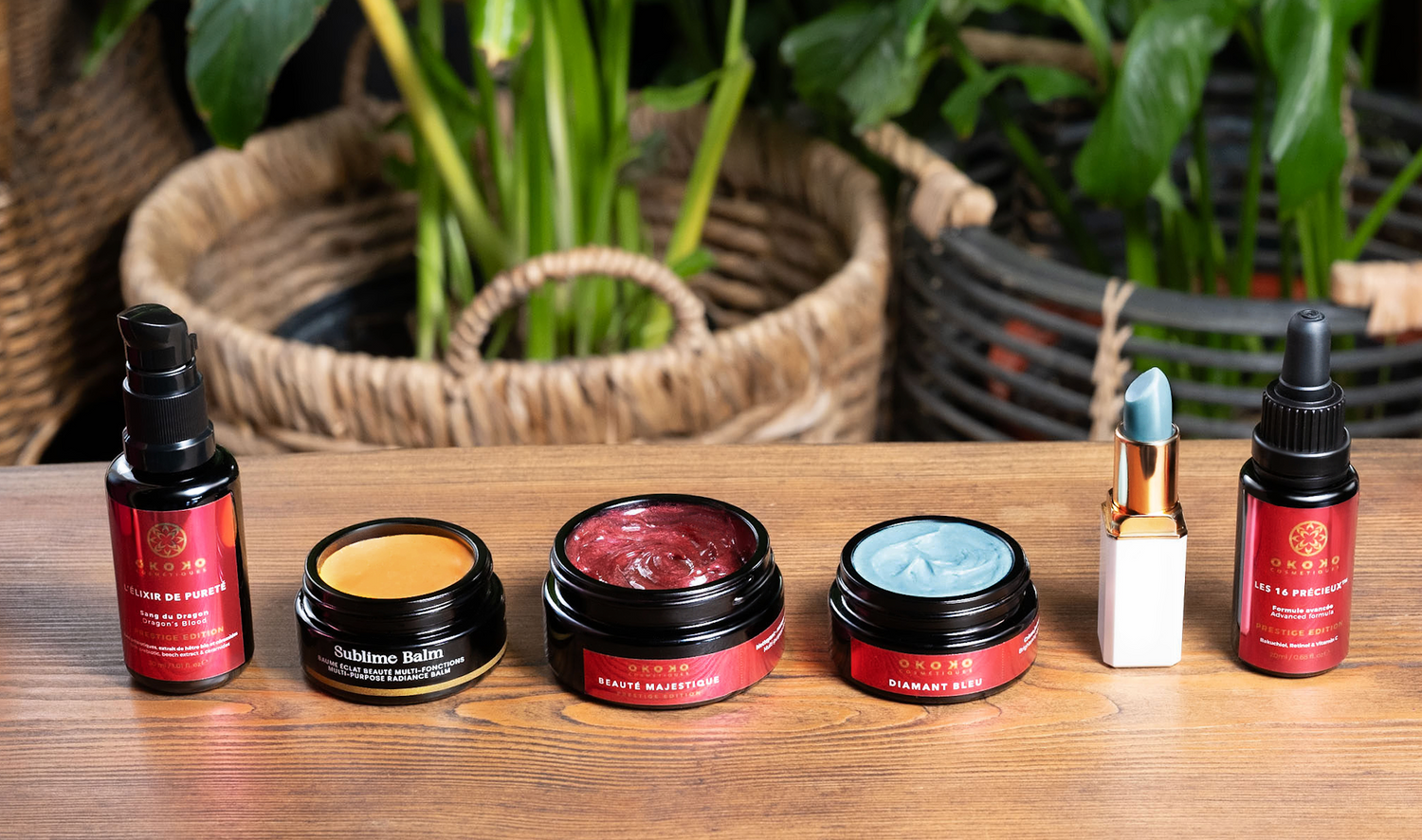Why preservatives are necessary
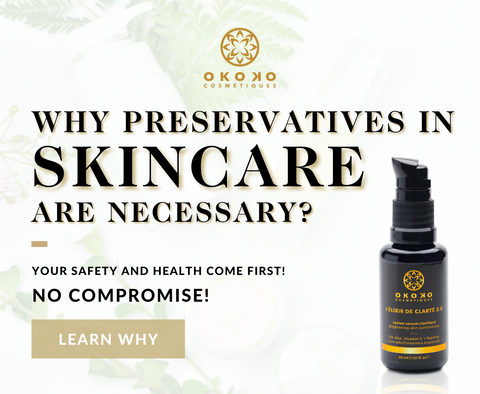
MYTH: All preservatives are dangerous and must be avoided
A water based product that is left unprotected, can quickly grow various undesirable microorganisms such microbes, bacteria, fungus, and yeast. It’s really, too much risk to take here! Preservatives do serve a purpose which is to protect consumers from bacteria, fungus, and yeast. It has been amply shown that inadequately preserved cosmetics can be hazardous to human health and cause problems such as skin infections, irritation and even blindness (case of unpreserved mascaras). The risk of using safe natural preservatives is lower than selling an unpreserved water based skincare products.Your safety and health come first! No compromise!
When should/do we use a preservative?
Water containing products need a preservative. Even products with aloe vera, hydrosols, or hydro-soluble extracts need to be preserved. That would include things like: lotion, cream, cleanser, clay-cream, shampoo, water-based masque, etc.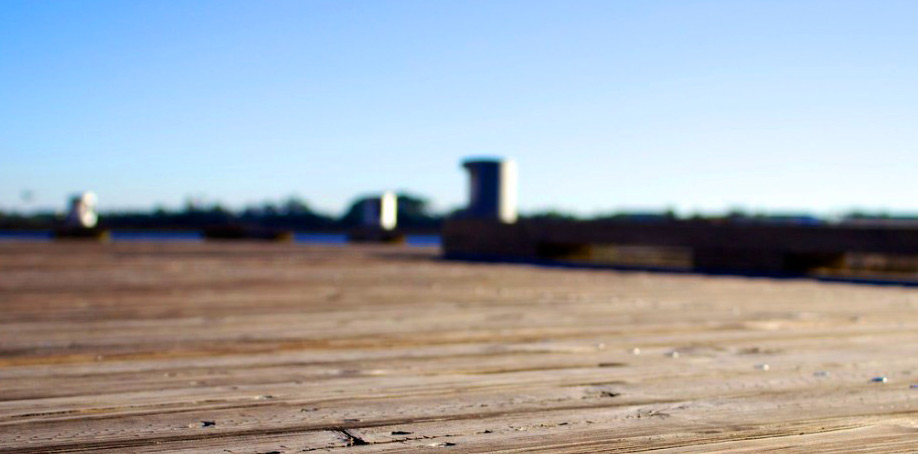
What are preservatives free cosmetics?
Waterless products: oil based
That would include things like balm, oil based serum, massage oil, lip balm, etc. They don’t need preservatives because harmful microbes will not grow in them. If water is going to be introduced inside the product, then a preservative is needed.
Dry clay face cleanser
Clay-based facial masques are notoriously difficult to preserve because the clay often absorbs most if not all of the preservative in your formulation. (Formula Botanica). In this case, the most acceptable option is to use a blend of synthetic preservatives that include phenoxyethanol. So we at Okoko, preferred to sell our clay masks in a powdered form instead.
Here are some broad spectrum preservation systems based on a combination of ingredients that have global acceptance (this list is not exhaustive)
Leucidal® Liquid
INCI Nomenclature: Leuconostoc/Radish Root Ferment Filtrate
Leucidal® Liquid SF
INCI Nomenclature: Lactobacillus Ferment
AMTicide® Coconut
INCI Nomenclature: Lactobacillus & Cocos Nucifera (Coconut) Fruit Extract
Silver
INCI Nomenclature: Colloidal Silver
Geogard 221 / Cosgard (eco-certified)
INCI Nomenclature: Benzyl Alcohol (and) Dehydroacetic Acid
Preservative Eco
INCI Nomenclature: Benzyl Alcohol, Salicylic Acid, Glycerin, Sorbic Acid
Other ingredients used to boost efficacy are: Honeysuckle Blend, Sodium Levulinate, Sodium Anisate, Anisic Acid, Salicylic Acid (Aspen Bark Extract or Willow Bark Extract), Citric Acid, Glycerin
* Vitamin E, rosemary extract and grapefruit seed extract are not preservatives.
Examples of natural preservative boosters (for added protection)
Dermosoft® GMCY (preservative booster)
INCI Nomenclature: Glyceryl caprylate
Glycerin (helps reduce bacterial growth by reducing free water activity)
INCI Nomenclature: Glycerin
Dermosoft® anisate eco (fully naturally derived, has strong fungicidal activity)
INCI Nomenclature: Sodium Anisate
OR
Chelating agents are also used in skincare to boost the preservative system
Gluconolactone (rather a preservative booster, chelating
agent, moisturizing)
INCI Nomenclature: Gluconolactone
Dermofeel® PA-3
INCI Nomenclature: Sodium Phytate, Aqua, Alcohol
Examples of natural preservatives we use in our formulas
We use a blend of preservatives (found below) to cover the range of bacteria and fungi that might be encountered to protect you and your skin. We combine them with preservatives boosters and chelating agents (when applicable) to boost efficacy.
Leucidal® Liquid
INCI Nomenclature: Leuconostoc/Radish Root Ferment Filtrate
Leucidal® Liquid SF
INCI Nomenclature: Lactobacillus Ferment
Geogard 221 / Cosgard
NCI Nomenclature: Benzyl Alcohol (and) Dehydroacetic Acid
Found in: Our serums
Other ingredients we use to help boost efficacy: Salicylic Acid (Organic Willow Bark Extract), Citric Acid, AHA's (low ph), glycerin and Dermofeel® PA-3.
* About Dermofeel® PA-3: It's an Ecocert certified, globally accepted, palm-free and natural based chelating agent for natural and organic cosmetics.
Recommended reading
https://formulabotanica.com/natural-preservatives
https://formulabotanica.com/certificate-in-natural-cosmetic-preservation/
http://chemistscorner.com/natural-cosmetic-preservative-questions-answered
http://chemistscorner.com/natural-preservatives-in-cosmetics-a-trend

